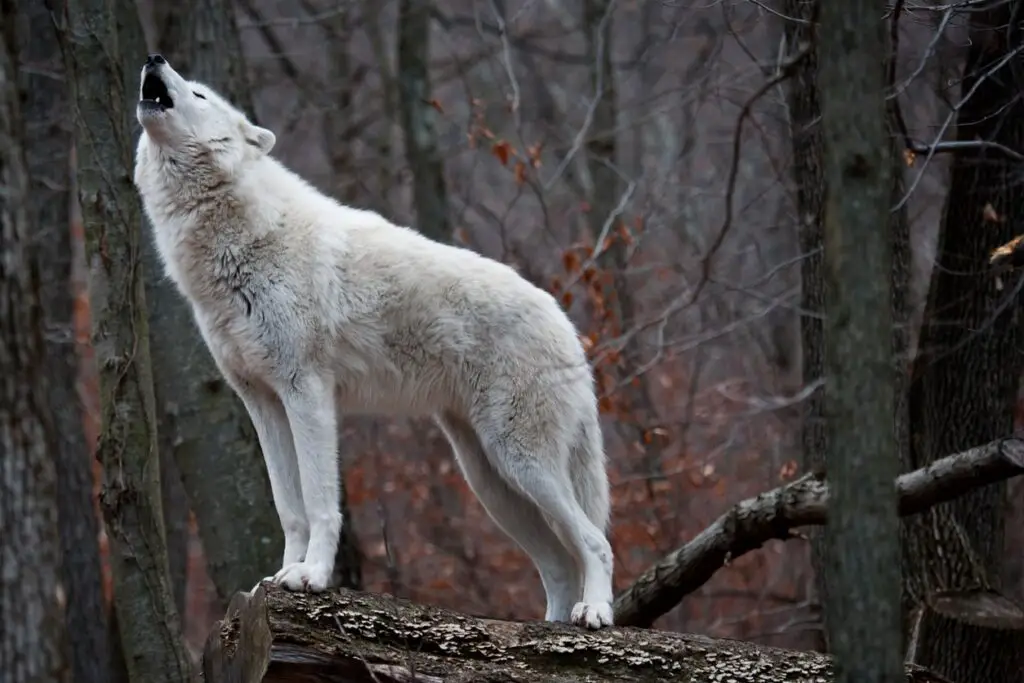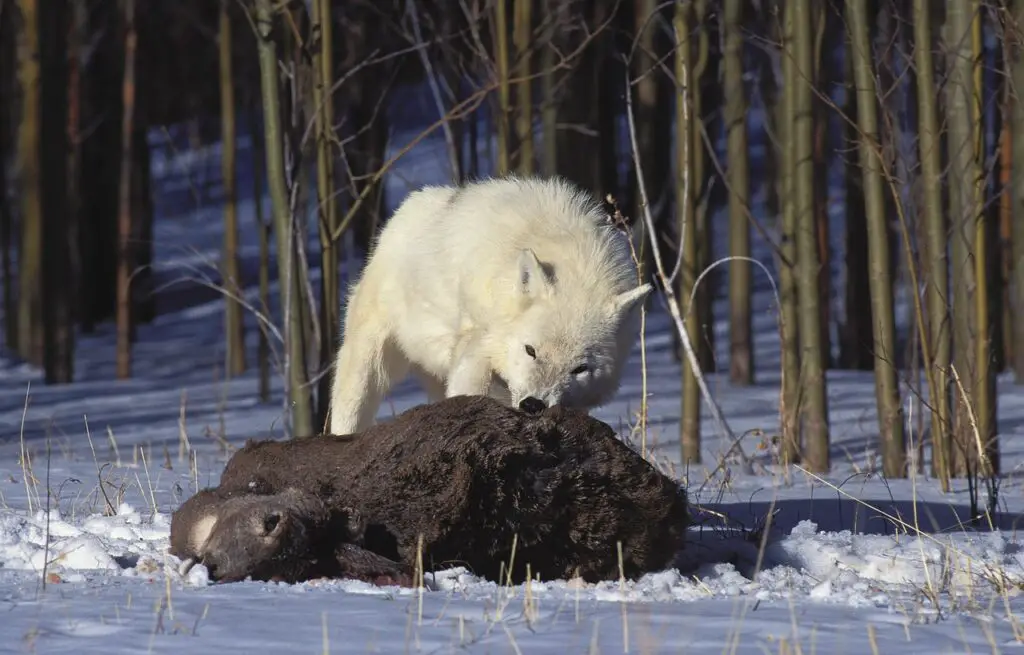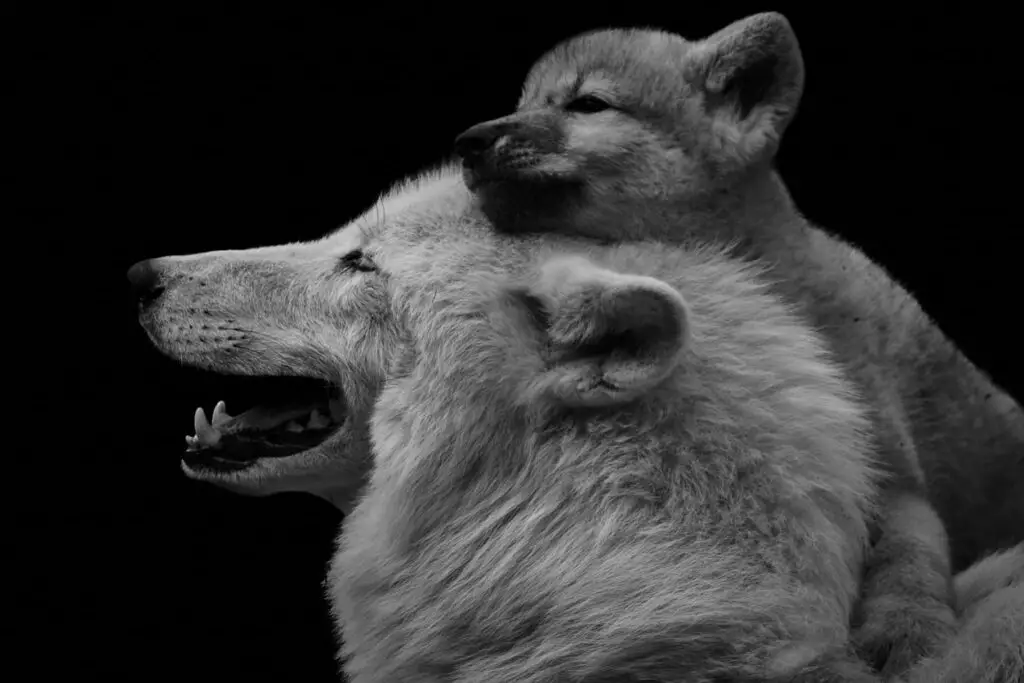Arctic wolves, also known as polar or white wolves, reside only in the Arctic regions of Canada and Greenland. Their habitat, inhospitable to most humans, provides them with a layer of security their cousins to the south do not enjoy.
Humanity neither has any interest in developing Arctic wolves’ habitat nor hunting them for sport.

What are arctic wolves?
Arctic wolves (Canis lupus arctos) are a subspecies of the gray wolf (Canis lupus) and reside entirely above the northern tree line in the high arctic tundra. The arctic wolf has a white coat, a smaller skull, and smaller paired upper and lower teeth than the Northwestern wolf.
In the wild, Arctic wolves live an average of seven to ten years.
Arctic wolves kingdom.
Arctic Wolves belong to the Kingdom Animalia.
Arctic Wolf phylum.
The Arctic wolf is assigned to the phylum Chordata.
Arctic Wolves class.
Arctic Wolves belong to the class Mammalia.
Arctic Wolf family.
Arctic Wolf belongs to the family Canidae.
Arctic Wolves order.
Arctic Wolves belong to the order Carnivora.
Arctic Wolves genius.
Arctic Wolves belong to the genus Canis.

The behavior of arctic wolves.
Arctic wolves do not have much contact with humans, and the results of the limited interactions between the two are inherently dangerous to both arctic wolves and people.
One primary concern is that arctic wolves have little natural fear of humans. They will, though, come close to people when lured; though naturally skittish, their curiosity overwhelms them.
Fortunately for both arctic wolves and humans, the high Arctic tundra has little more than a handful of biological scientists and weather station operators intruding into the arctic wolves’ territory. Perhaps these humans are mistaken for prey on occasion, but of more concern are the cases of rabies noted in these populations.
When we say that arctic wolves live in a habitat that remains free from human development and hunting, we mean by sheer “lack” of numbers. In this case, lack of higher, more hospitable human temperatures.
During the winter, there is absolute darkness for nearly the entire day. The temperatures can reach as far as -65 below zero. No one wants to spend a day researching wolves at those temperatures, let alone building a hotel, or sitting on a wolf hunting stand (with some exceptions noted below).
Are arctic wolves hunted?
Arctic wolves are hunted on the mainland and some of the more remote Arctic islands. Polar wolf hunting is done from late February until the end of March and involves a lot of snowmobiling and sledding. Such hunting involves many hours of exposure to extreme cold and traveling through areas rarely seen by other humans.

Arctic wolves habitat.
While other wolves, like the gray wolf, live in dens or holes dug into the ground. The Arctic wolf only lives in caves or sheltered areas among outcroppings of rocks. Dens carved out under tree trunks, and even simple shallow pits are impossible due to the ever-frozen nature of the active wolves’ habitat.
Fortunately, even the pups of Arctic wolves can tolerate the frigid arctic temperatures with little to no protection.
Arctic wolves eat mostly caribou, musk oxen, and the occasional moose. These large prey are taken in packs. An adult arctic wolf will consume nearly 20 pounds of meat during a single feeding.
When large prey is scarce, Arctic Hares, ptarmigan, seals, lemmings, and other smaller mammals are also preyed upon. An Arctic wolf can leave for several weeks without eating in a pinch.

Arctic wolf lifecycle.
There are currently about 200,000 arctic wolves in existence. Only bears, other wolves, and humans are natural predators of the arctic wolf.
Like coyotes and other wolves, the arctic wolf mates for life, and only the non-related alpha female and the alpha male will produce offspring. Arctic wolf pups are born in May and June after a 63-day gestation period. The 3-6 puppies from a litter are born with dark fur and blue eyes, the fur whitening and the eyes turning yellow as they age.

